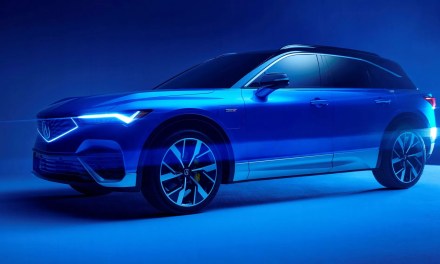Interest in battery electric vehicles (BEVs) is growing rapidly. Roland Berger says that in 2021, electric cars accounted for only 4% of the global passenger vehicle sales, but by 2030 this figure is expected to rise to over 30%.
Such a strong increase in demand will create new risks for the lithium-ion battery supply chain, particularly around the availability of raw materials. The Munich-based management consultancy’s researchers analyze these challenges and show how companies can overcome them in a new publication called “The lithium-ion (EV) battery market and supply chain.”
“The battery pack is a key component of electric mobility,” said Wolfgang Bernhart, Partner at Roland Berger. “The cost depends on the precise cell technology used, where the battery is produced, and to a very large extent on the price of the raw materials. Increased raw material costs have already made electric car batteries massively more expensive to produce in recent months. The war in Ukraine is exacerbating things even further. While this will not halt the trend towards electric vehicles, it may slow it down.”
According to the researchers, the global lithium-ion battery market is expected to show annual growth of 30% through 2030. This level of electrification—equivalent to 31 million BEVs—would correspond to the global demand of over 3100 GW·h in 2030, although the announced capacity is significantly higher than that already.
The increase in production will significantly add to the strain on the battery supply chain. Most critical is the dependency on certain raw and refined materials such as cobalt and nickel sulfates as well as lithium. These materials account for more than 30% of the cell costs, with cells making up about 75% of the total cost of the battery pack.
In the publication, Roland Berger experts identify four main areas of supply-chain risks: geopolitical factors, ESG (environmental, social, and governance), price, and supply.
The extraction and processing of crucial resources like lithium are concentrated in a small number of countries. About one-tenth of all nickel comes from Russia, which has led to the massive price reactions on the commodity markets with the beginning of the war in Ukraine.
Battery manufacturing has a significant environmental and social impact. Lithium extraction uses high quantities of water, and some production processes emit large amounts of CO2.
Next to the fluctuating raw material prices, the costs of the additional production capacities in the “mine to cell” value chain must also be considered. Capital expenditure of €250-300 billion over the next eight years is forecast, a third of which will go towards meeting European demand.
Total battery pack costs can likely be reduced by $30-40/kWh focusing on pack design, processes, and cell chemistry—taking the number below the long-sought-after $100/kW·h level. However, further progress requires a holistic approach.
The availability of certain materials will become critical. Shortages of both a temporary and a long-term nature are expected for nickel and cobalt, and their sulfates, and for lithium, in particular.
Avoiding the shortfalls will require changes throughout the entire battery supply chain.
“On a production level, an integrated approach between metallurgy and chemistry will help reduce costs,” said Bernhart. “Greater regionalization and collocation of multiple steps in battery manufacturing can also mitigate geopolitical and ESG risks. Recycling, too, will take on an increasingly important role from the end of the decade onward.”
As regulatory requirements evolve, companies throughout the value chain will find themselves more obligated in implementing a circular battery economy. The potentially recoverable materials from batteries will be vital in ensuring that supply can meet the rising demand.
“Strategically, OEMs and battery manufacturers can also increase their involvement in the upstream supply chain,” said Bernhart. “This may range from long-term supply agreements to partnerships or investments. Positioning oneself at all critical control points along the supply chain is a complex and costly undertaking, but it will provide a strong competitive advantage.”
Some forward-thinking OEMs like Tesla, General Motors, and Volkswagen have already started thinking holistically and locking in long-term supply agreements.
In just one example, last July GM announced a collaboration with Controlled Thermal Resources (CTR) to secure local and low-cost lithium. In November, CTR reported it had commenced a drilling program, initiating Stage One of its Hell’s Kitchen Lithium and Power project in Imperial, CA. The lithium will be produced through a closed-loop, direct extraction process that results in a smaller physical footprint, no production tailing, and lower carbon dioxide emissions when compared to traditional processes like pit mining or evaporation ponds.
Access to those materials is so important that even countries are getting involved.
At the end of March, U.S. President Joe Biden invoked Section 303 of the Defense Production Act of 1950 to ensure a robust, resilient, sustainable, and environmentally responsible domestic industrial base to meet the requirements of the clean-energy economy, such as the production of large-capacity batteries.
His memorandum for the U.S. Secretary of Defense said it is essential to national security and the development and preservation of domestic critical infrastructure to ensure reliable domestic sources for key materials such as lithium, nickel, cobalt, graphite, and manganese.
- CTR Hell’s Kitchen Lithium and Power project in Imperial, CA.
- Global demand, lithium-ion, batteries, through 2030. (Roland Berger report)
- Large battery-pack cost-reduction expectations. (Roland Berger)





























































































